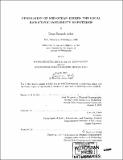| dc.contributor.advisor | Glenn R. Flierl. | en_US |
| dc.contributor.author | Arbic, Brian K | en_US |
| dc.contributor.other | Woods Hole Oceanographic Institution. | en_US |
| dc.date.accessioned | 2010-03-25T14:53:09Z | |
| dc.date.available | 2010-03-25T14:53:09Z | |
| dc.date.copyright | 2000 | en_US |
| dc.date.issued | 2000 | en_US |
| dc.identifier.uri | http://hdl.handle.net/1721.1/53047 | |
| dc.description | Thesis (Ph.D.)--Joint Program in Physical Oceanography (Massachusetts Institute of Technology, Dept. of Earth, Atmospheric, and Planetary Sciences and the Woods Hole Oceanographic Institution), 2000. | en_US |
| dc.description | Includes bibliographical references (p. 284-290). | en_US |
| dc.description.statementofresponsibility | by Brian Kenneth Arbic. | en_US |
| dc.format.extent | 290 p. | en_US |
| dc.language.iso | eng | en_US |
| dc.publisher | Massachusetts Institute of Technology | en_US |
| dc.rights | M.I.T. theses are protected by
copyright. They may be viewed from this source for any purpose, but
reproduction or distribution in any format is prohibited without written
permission. See provided URL for inquiries about permission. | en_US |
| dc.rights.uri | http://dspace.mit.edu/handle/1721.1/7582 | en_US |
| dc.subject | Earth, Atmospheric, and Planetary Sciences. | en_US |
| dc.subject | Woods Hole Oceanographic Institution. | en_US |
| dc.subject | Joint Program in Physical Oceanography. | en_US |
| dc.subject.lcsh | Eddies Mathematical models | en_US |
| dc.subject.lcsh | Vortex-motion Mathematical models | en_US |
| dc.subject.lcsh | Baroclinicity Mathematical models | en_US |
| dc.subject.lcsh | Ocean-atmosphere interaction Mathematical models | en_US |
| dc.subject.lcsh | Dynamic meteorology | en_US |
| dc.title | Generation of mid-ocean eddies : the local baroclinic instability hypothesis | en_US |
| dc.type | Thesis | en_US |
| dc.description.degree | Ph.D. | en_US |
| dc.contributor.department | Woods Hole Oceanographic Institution | en_US |
| dc.contributor.department | Joint Program in Physical Oceanography | en_US |
| dc.contributor.department | Massachusetts Institute of Technology. Department of Earth, Atmospheric, and Planetary Sciences | |
| dc.identifier.oclc | 48684936 | en_US |
| dc.audience.educationlevel | The plausibility of local baroclinic instability as a generation mechanism for midocean mesoscale eddies is examined with a two-layer, quasi-geostrophic (QG) model forced by an imposed, horizontally homogeneous, vertically sheared mean flow and dissipated through bottom Ekman friction. Explanations are sought for two observed features of mid-ocean eddies: 1) substantial energy is retained in the baroclinic mode and in the associated deformation radius (Rd) scale, and 2) the ratio of eddy to mean kinetic energy is much larger than one. The tendency of QG to cascade energy into the barotropic mode and into scales larger than Rd can be counteracted when stratification is surface-trapped, for then the baroclinic mode is weakly damped, and hence enhanced. Numerical experiments are performed with both surface-trapped and uniform stratification to quantify this. Experiments with equal Ekman frictions in the two layers are also performed for purposes of contrast. Interpretation is aided with an inequality derived from the energy and enstrophy equations. The inequality forbids the simultaneous retention of substantial energy in the baroclinic mode and in scales near Rd when Ekman friction is symmetric, but points towards surface-trapped stratification and bottomtrapped friction as an environment in which both of these can be achieved. The dissertation also contains a systematic study of geostrophic turbulence forced by nonzonal flows. Narrow zonal jets emerge when shear-induced mean potential vorticity (PV) gradients are small compared to the planetary gradient (0), and energy is a strong function of the angle shear presents to the east-west direction. When shear-induced PV gradients are comparable to 3, and the mean shear has a westward component, fields of monopolar vortices form and persist. Energy is asymmetric between fields of cyclones and anticyclones. Such asymmetry was commonly thought not to occur in QG, but is shown here to be introduced by the nonzonal basic state. In both jet and vortex regimes, eddy energy can be much larger than mean kinetic energy, contrary to the expectation that [beta] stabilizes weak shear flows. | eb_US |

